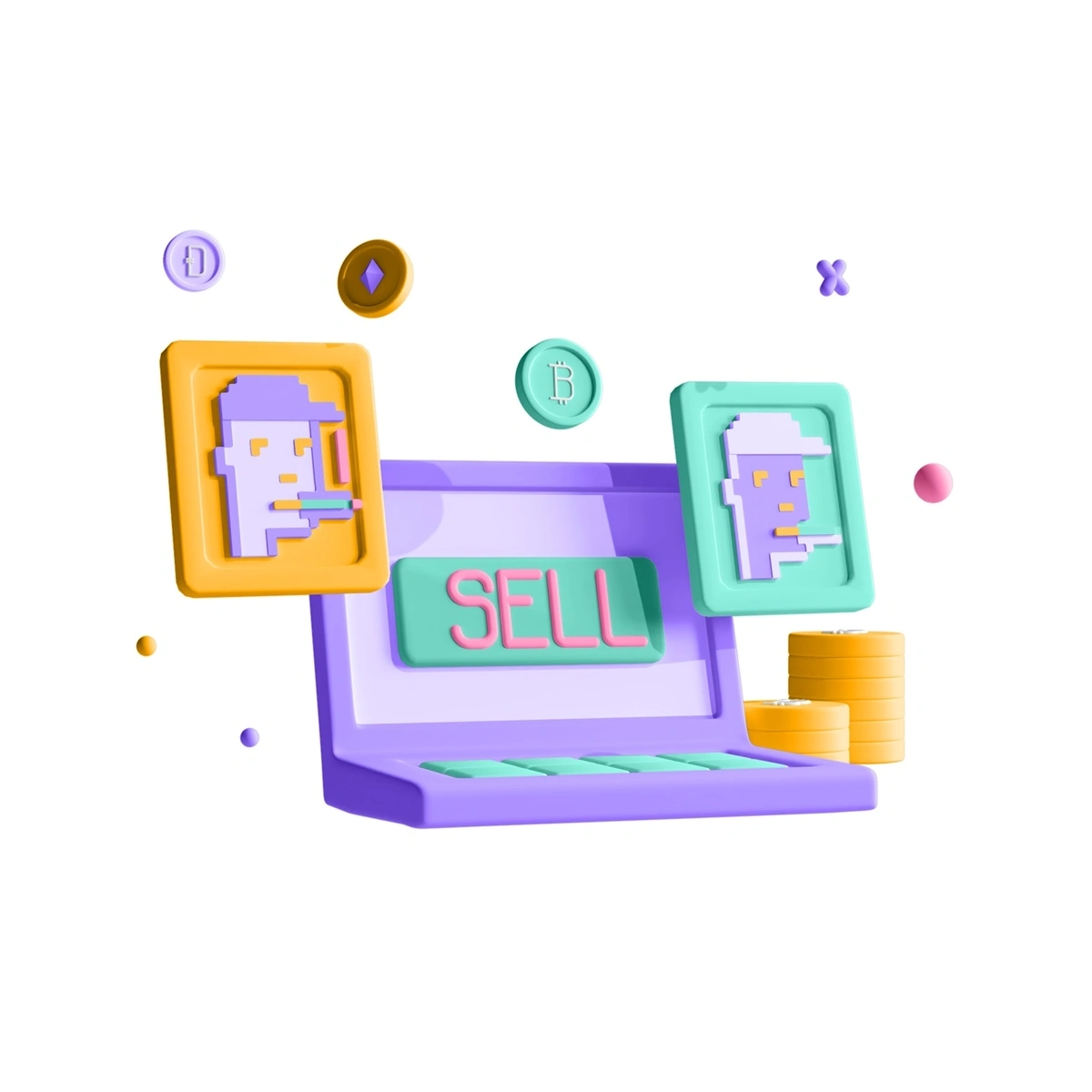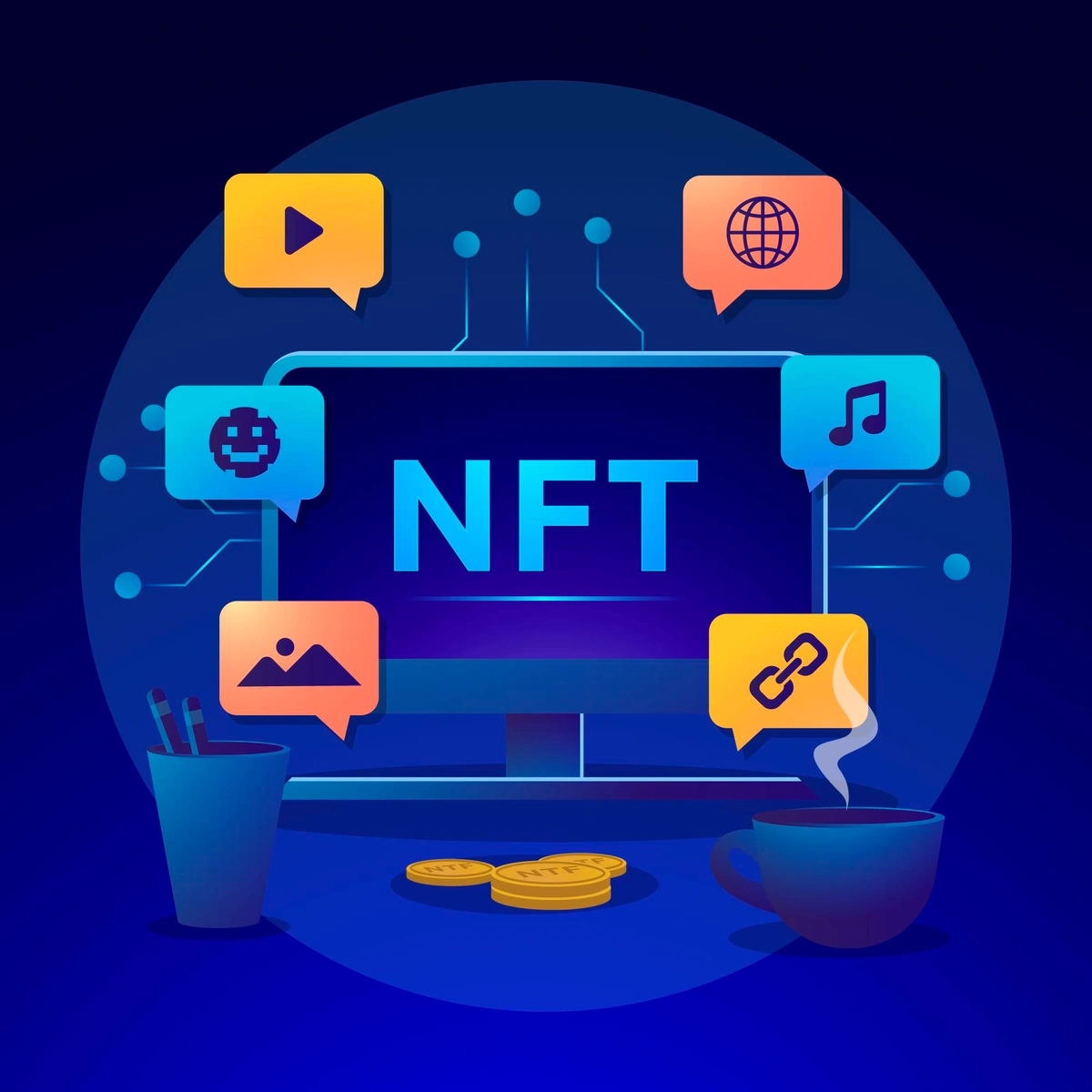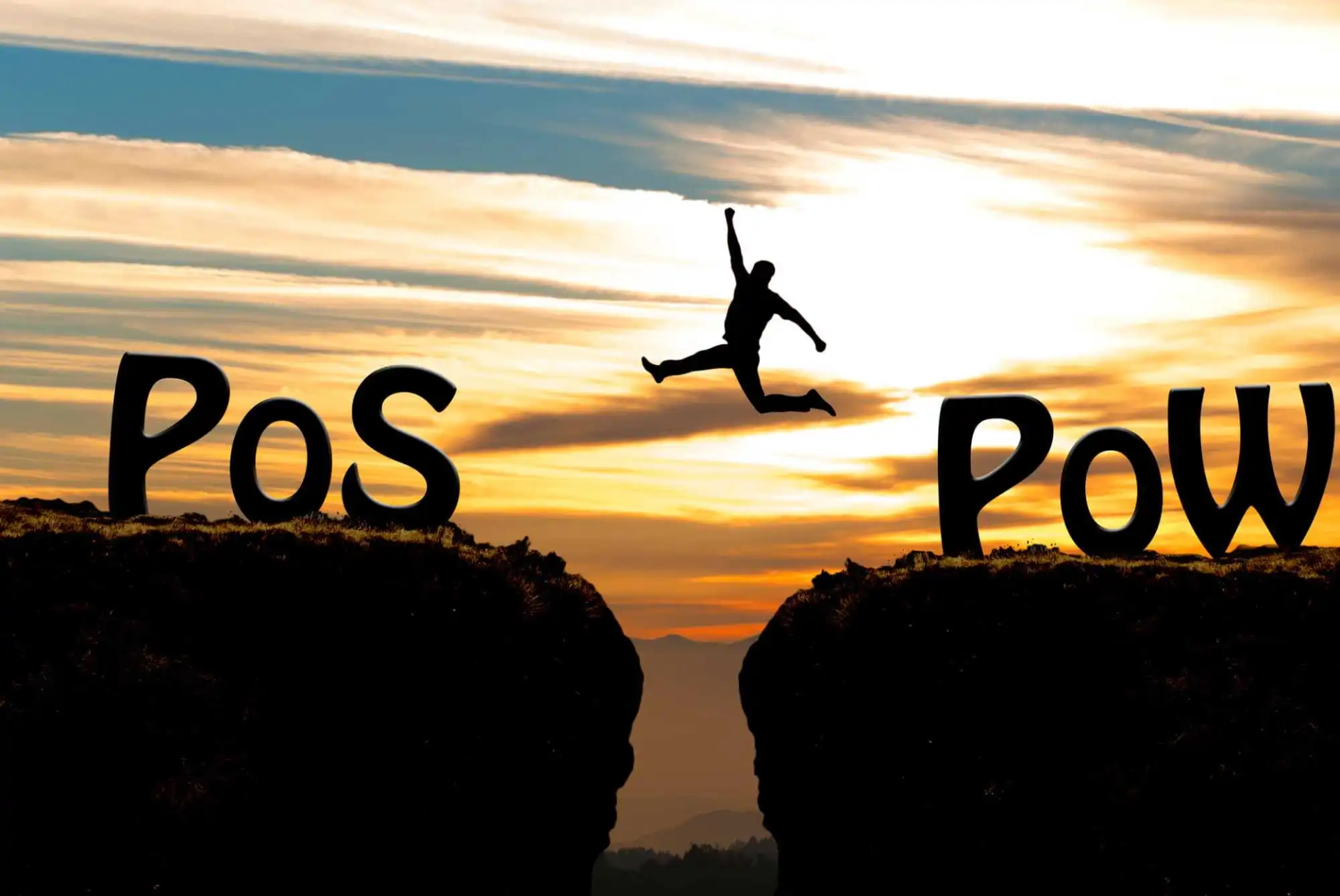A common misconception is that NFTs are just digital art—images stored on the blockchain. NFTs, also known as non-fungible tokens, are far more versatile and complex. They represent unique digital assets that can range from art and music to virtual real estate and beyond.
As technology advances, NFTs are evolving, becoming more interactive and integrated into our daily online experiences. In this guide, we’ll explore how AI, social media, and decentralized tech are increasing accessibility for all types of users. NFTs are no longer just for the tech savvy, but now for anyone interested, such as creators, collectors, businesses, and consumers.
New NFT Marketplace Trends
Cross-Chain Support
One significant development is the integration of cross-chain support. Traditionally, NFTs were confined to the blockchain they were created on, like Ethereum. However, cross-chain capabilities now allow NFTs to be bought, sold, and traded across multiple blockchain networks.
For instance, Rarible currently supports 12 blockchains and OpenSea has expanded to support 12 blockchains too.
Shared Ownership
Shared ownership, or fractional ownership, is another of the trends in NFT that is gaining traction as it allows multiple people to collectively own a fraction of a high-value NFT. This approach democratizes access to expensive digital assets, making them available to a broader audience.
Platforms like Fractional.art and Unicly facilitate the fractionalization of NFTs, enabling users to purchase and trade portions of iconic assets like the CryptoPunk series or rare digital art collections. This trend allows investors to diversify their portfolios and engage with high-value NFTs without needing to purchase the entire asset.

Tokenization of Physical Assets
NFTs are changing how we do business, as they are no longer limited to digital art or virtual items—they can also represent physical assets. NFT tokenization is, in fact, the process of creating a digital representation of a physical asset on the blockchain.
This allows real-world items like artwork, real estate, or luxury goods to be turned into NFTs, enabling them to be bought, sold, or traded online just like digital assets. For example, companies like RealT are using tokenization to represent shares of real estate as NFTs, allowing users to invest in property in a completely digital manner.
Advanced Curation and Search
As the NFT market grows, so does the variety of assets available—from digital art to tokenized physical items like real estate. With such a wide range of NFTs, finding the right one can be overwhelming. That's where advanced curation and search tools come in.
These aren't just basic filters like you might find on a typical e-commerce site. Instead, NFT marketplaces are incorporating sophisticated algorithms and AI-driven systems that do much more. They can learn from your preferences and browsing habits to suggest NFTs that might interest you. For example, if you frequently look at digital art from a particular artist, the marketplace might highlight similar works or new pieces from that artist as soon as they become available.
Additionally, these tools help organize and categorize NFTs in ways that make sense to users, making it easier to discover new assets you might not have thought to search for directly. For instance, you could explore collections based on trending themes, most appreciated artists, or assets related to a particular virtual world.
Gaming and Virtual Worlds Integration
NFTs aren't just for art or collectibles, as they're also making a big impact in gaming. Now, NFTs can represent things like in-game items, characters, or virtual land—not dissimilar to loot rewards in traditional gaming. In all, this means that players can buy, sell, or trade these NFTs just like they would with real-world items, but all within the game itself.
For example, in games like Decentraland and Axie Infinity, players can purchase virtual land or characters as NFTs. These virtual assets can be owned, sold, or even rented out, just like physical property in the real world, blurring the line between gaming and real-world economics.
Environmental Impact and Sustainability
The environmental impact of NFTs and blockchain technology has been a concern for a while. The process of minting (creating) NFTs and validating transactions requires a lot of computational power, which also leads to high energy consumption. Adding to the problem is the increased creation of e-waste for the NFT and DeFi industry, as so many devices are discarded after becoming obsolete.
To mitigate the environmental impact of NFTs, the industry is adopting several strategies. Many blockchains are shifting to Proof of Stake (PoS), which drastically reduces energy consumption. Additionally, there’s an increasing push towards using renewable energy for blockchain operations, minimizing reliance on fossil fuels.
Some NFT platforms and creators are also investing in carbon offset projects, using a portion of their profits to fund environmental conservation and support sustainable technologies, making the NFT ecosystem more eco-friendly.
Legal and Regulatory Challenges of NFTs
Intellectual Property Rights
Sometimes, people create NFTs from artwork or other content that they don't own. In many cases, original creators can take legal action to protect their work. For example, if someone turns a famous artist’s work into an NFT without permission, that artist has the right to claim ownership and possibly take the NFT down or sue for damages.
Fraud and Scams
NFT market trends are also showing an increase in scams. There are users out there selling fake NFTs or stealing others' work, attempting to pass it off as their own. For beginners, it’s important to only buy NFTs from reputable platforms and always check the source of the NFT before purchasing.
Money Laundering Concerns
As NFTs can involve large sums of money and can be bought anonymously, there’s a concern that they could be used to hide illegal money. To prevent this, some platforms are starting to implement KYC and AML for buyers and sellers to make sure everything is above board.
Taxation Issues
Figuring out taxes with NFTs can be tricky. In some places, NFTs might be taxed like art or collectibles, and in others, they might be treated differently. This is something both creators and buyers need to be aware of, as it could impact how much they owe in taxes.
Verification and Provenance of NFTs
As the NFT market grows, the risk of buying fake or misrepresented assets increases, making verification and provenance more important. These processes confirm the creator’s identity and track the ownership history of an NFT, ensuring its authenticity. Platforms like Etherscan offer tools to verify creators and trace the history of NFTs. This is crucial for preventing fraud and adds value for collectors, especially when NFTs have notable ownership histories or are part of limited series.

VR/AR Integration in NFT Marketplaces
NFT marketplaces now allow users to experience digital assets in immersive environments using VR headsets or AR devices. Users can explore virtual galleries, interact with 3D NFTs, and even customize virtual spaces to display their collections. These innovations offer opportunities for live events, collaborative art creation, and personalized digital experiences, ultimately transforming how collectors and artists engage with NFTs. With VR/AR integration, NFT evolve from static images to dynamic, participatory experiences.
AI-Driven NFT Marketplaces
AI is changing how we interact with NFTs, making them smarter and more engaging. These AI-enhanced NFTs can respond to user actions, adapting their appearance or behavior based on what the user prefers. This turns NFTs from static items into dynamic, personalized experiences that offer more ongoing value.
Rise of Social Media-Based NFT Platforms
Integrating NFT functionalities directly into platforms like Instagram and Twitter has made it easier for users to create, showcase, and trade NFTs. This accessibility is democratizing the NFT market, allowing more people to participate in the digital art and collectibles space.
What is the Future of NFT?
As we've seen, NFTs are evolving far beyond basic digital art. The combination of AI, social media platforms, and decentralized technologies is pushing NFTs into new areas of creativity and ownership.
These changes are making NFTs more interactive, accessible, and secure, reshaping how we think about digital and physical assets. Undoubtedly, we’re going to see NFTs playing a more prominent role in daily commerce for businesses and consumers.




